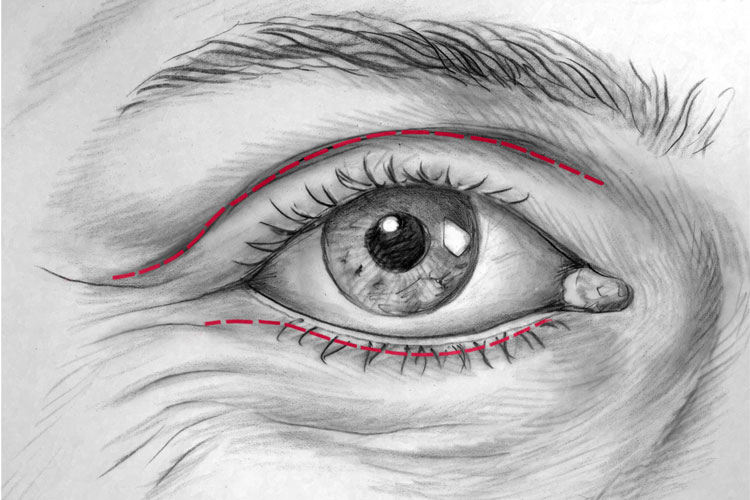What is Blepharoplasty surgery?
 Blepharoplasty, also known as eyelid surgery, is a procedure to remove excess skin, fat, or muscle from the upper or lower eyelids. It can be performed for cosmetic reasons (to create a more youthful, refreshed appearance) or functional reasons (to improve vision if lax eyelid skin obstruct sight). It must be distinguished from eyelid ptosis where the muscle (levator palpebrae superioris) that pulls the upper eyelid upwards has weakened causing the eyelid to drop down like a curtain over the pupil. Other times, a dropped brow line can cause the upper eyelid skin to appear to be in excess where it is not. In these cases, correctional surgery involves a browlift. Dr Teh performs upper eyelid reductions, but will only perform lower eyelid lifts and browlifts in selected patients. If you require ptosis surgery, he will refer you to an opthalmic surgeon.
Blepharoplasty, also known as eyelid surgery, is a procedure to remove excess skin, fat, or muscle from the upper or lower eyelids. It can be performed for cosmetic reasons (to create a more youthful, refreshed appearance) or functional reasons (to improve vision if lax eyelid skin obstruct sight). It must be distinguished from eyelid ptosis where the muscle (levator palpebrae superioris) that pulls the upper eyelid upwards has weakened causing the eyelid to drop down like a curtain over the pupil. Other times, a dropped brow line can cause the upper eyelid skin to appear to be in excess where it is not. In these cases, correctional surgery involves a browlift. Dr Teh performs upper eyelid reductions, but will only perform lower eyelid lifts and browlifts in selected patients. If you require ptosis surgery, he will refer you to an opthalmic surgeon.
What It Involves
Upper Eyelid Blepharoplasty
Removes or repositions excess skin and fat from the upper eyelid.
Incision is made in the natural crease of the eyelid, so the scar is usually well-hidden.
May help improve field of vision if sagging skin droops over the eyes.
Lower Eyelid Blepharoplasty
Targets puffiness, bags, or loose skin under the eyes.
Incision is made either just below the lash line or inside the lower eyelid (called transconjunctival approach).
Fat may be removed or redistributed; sometimes skin is tightened.
How is it performed?
Usually done under local anaesthetic with sedation, or general anaesthetic in some cases.
Takes 1–2 hours, depending on the extent.
Often performed as a day surgery, meaning you go home the same day.
What is the expected recovery?
Mild swelling, bruising, and dry or watery eyes are common for 1–2 weeks.
Sutures are usually removed after 5–7 days.
Most people return to light activities after 1 week; full recovery takes a few weeks.
Final results may take a few months to fully settle.
⚠️What are the risks of surgery?
Risks of upper and lower blepharoplasty surgery include:
General surgical risks:
Bleeding
Infection
Poor wound healing
Scarring
Eyelid-specific risks:
Dry, irritated, or watery eyes
Difficulty closing the eyes (temporary or rarely permanent)
Blurred or double vision (usually temporary)
Asymmetry or unsatisfactory cosmetic result leading to need for revisionary surgery
Skin discolouration or swelling
Changes in eyelid position ( lower lid droop – scleral show or ectropion; entropion where the eyelashes point toward the eye)
Rare but serious risks:
Vision loss (extremely rare)
Damage to eye muscles or nerves
Most side effects are temporary and improve with healing, but some may require further treatment or revision surgery.
